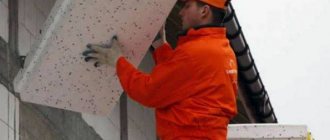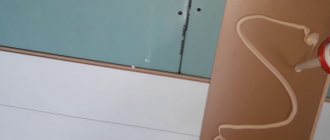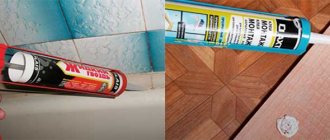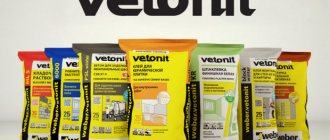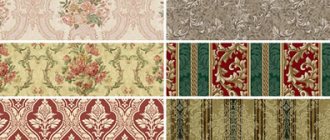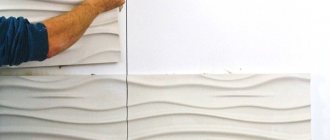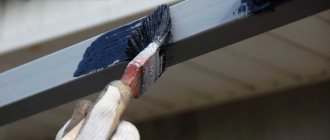Finishing the facade allows you to create the appearance of the home that the homeowner needs. At the same time, the material serves not only as decoration, but also performs a number of protective functions. But plastering is a rather complex process that may require additional materials in addition to the mortar. These include façade reinforcing mesh.
Let's find out what it is, what it is used for, and what it is.
You will also be able to understand how to choose and use this material correctly when carrying out facade finishing work.
Why do you need reinforcing mesh?
Application of reinforcing mesh
- to strengthen the foundation, floors, floor screeds;
- for the need to connect non-joining surfaces or apply a layer of plaster on surfaces with poor adhesion (laying plaster on a metal base, on painted walls, foam plastic, wood, etc.)
- for strengthening a thick layer of plaster (more than 20 mm), especially on vertical and ceiling surfaces;
- to prevent premature cracking;
- during finishing finishing processes to avoid small cracks after the plaster has dried;
- to reduce vibration and deformation of finishing layers under mechanical stress.
How to choose material
Before you begin installing the façade mesh, you should select it correctly for a specific situation.
Much depends on the conditions of use. In this regard, the following recommendations can be given:
- if the layer thickness is more than 20 mm, then a façade reinforcing mesh is required;
- if the layer is 20-30 mm, the optimal choice is a fiberglass structure;
- for a layer of more than 30 mm, it is better to choose durable metal mesh.
And a few more general tips and rules:
- the mesh weave should not have any defects;
- all edges are evenly trimmed;
- the packaging is intact;
- Each roll comes with a label with detailed information;
- do not use different grids for one façade;
- give preference to one manufacturer.
The choice is now huge, and therefore there should be no problems with purchasing.
Types of reinforcing mesh
- Metal;
- Composite;
- Polymer (polyurethane, polypropylene).
Average cell sizes of the reinforcing mesh:
- for plaster : cell up to 30x30 mm, wire thickness (metal, fiberglass, polypropylene) up to 1.5 mm;
- for screed : cell 100x100 mm or more, thick metal wire from 2.5 mm;
- for masonry : cell 50x50 mm, maximum 100x100 mm, metal wire up to 5 mm thick;
- for finishing putty ( painting ): small cell from 2x2 mm, material - fiberglass or polymers.
How does reinforcement occur?
See also
Installing siding on a wooden house with your own hands: how to sheathe
Now let's talk about how to plaster insulation over a mesh. Keep in mind that plaster on insulation has its own technological features.
Likewise, each mesh must be used according to the technology provided.
Because of this, the principles of reinforcement for metal and polymer, as well as fiberglass meshes are different.
Let's consider them separately. This is important to know before applying a cement-sand mixture for plaster or any other composition.
Metal mesh reinforcement
If you are using a metal mesh, then the process will look like this:
- clean the surface and remove all unevenness more than 5 mm;
- measure the height of the walls;
- cut the material according to measurements;
- drill holes at the top where the mesh is fixed;
- insert the dowel;
- secure the edge with screws and washers;
- fix along the entire length;
- moisten the reinforcing mesh;
- start applying plaster.
It is important to securely and correctly fasten the metal mesh.
Then it’s a matter of technique. If you know how to apply gypsum plaster for exterior use, as well as other types of mixtures, the further procedure will not create any difficulties.
Metal grid
This is a frame made of steel wire (or rods), perpendicular to each other and secured in various ways (using welding, cutting, twisting) to form cells of the correct shape.
Metal reinforcing mesh
Metal reinforcing mesh for screed
Screeding is not always done using reinforcing mesh. But there are several prerequisites for its use:
- rough screed (due to large shrinkage of the base);
- screed with a thin layer (to avoid cracking);
- screed with a thermal insulation effect (to save material and reduce load);
- installation of “warm” floors;
- floor screed in a room where a large load is planned.
Floor screed using metal reinforcing mesh
Metal mesh for screeding is produced mainly in sheets (0.5x2 m, 1.5x2 m), since it is not possible to roll thick wire (more than 2.5 mm). Standard cell sizes: 100x100 mm, 150x150 mm, 200x200 mm, depending on the concrete filler fraction. There are notches throughout the wire at a distance of 2-3 mm from each other. They act as a coupling to the concrete solution.
When choosing a reinforcing mesh for a screed, pay attention to the welded joints between the wires in the cells. Some unscrupulous manufacturers fasten by welding through 1-2 cells, and not each, this will then affect the quality of the screed filling and the strength of the entire base.
Advantages of metal reinforcing mesh
- reliable floor screed;
- increases the resistance of the foundation and walls to mechanical loads, increases the service life of the reinforced structure;
- plaster reinforced with metal mesh holds securely on the wall and does not crack;
- resists vibration and shrinkage of the building;
- ideal for plastering metal surfaces - simply welded to the base;
- increased rigidity allows you to save on fasteners.
Disadvantages of metal reinforcing mesh
- Rusts (corrosion) at welded points, corrosion in the alkaline environment of concrete;
- High thermal conductivity (40 W/m2) is a “cold bridge”;
- Low adhesion (adhesion to the solution) without impregnation;
- Large weight of metal mesh (from 2.21 kg/m2);
- The mesh becomes tangled during transportation and cannot withstand spot welding;
- It is dangerous, the sharp corners of the mesh injure the hands of workers;
- It is difficult to reinforce various different-sized wall materials (bricks, blocks);
- Not suitable for reinforcing thin joints (adhesive solution, glue) for cellular blocks;
- The metal mesh is “springy” and difficult to lay on a flat surface;
- Creates/screens magnetic fields (depending on the design and conditions, may affect the quality of wireless connections, mobile communications, etc.);
- High price;
- Conductor of electricity.
Types of metal mesh
Metal mesh is divided into the following subtypes:
- Welded;
- Chainlink;
- TsPVS (all-metal expanded metal mesh);
- Woven.
Welded - formed by welding reinforcement or thick wire. Used for pouring foundations and screeds.
Types of Welded Mesh
Chain -link is the most popular type of mesh (in great demand when constructing barriers); it is used very rarely for plastering walls, mainly to strengthen brickwork.
Rabitz
TsPVS - obtained by cutting holes in a single sheet of galvanized steel and stretching to obtain the desired cells on a special press machine. The maximum sheet thickness is up to 2 mm. This is a very durable professional material for new generation reinforcement. In construction it is used for reinforcing any surfaces (plastering walls, under tiles, thermal insulation, etc.), as well as fences, enclosures for livestock, interior items and in many other industries.
All metal expanded metal mesh
Woven - obtained by weaving very thin wire (galvanized, stainless, less often made of non-ferrous metal) of the same diameter with the formation of small cells measuring 1x1 mm.
Woven metal mesh
It is used for laying plaster in a thin layer on smooth wall surfaces.
What is it used for?
It’s logical to start with the question of why construction façade mesh is needed.
Plaster finishing is a popular and also long-standing method of façade cladding. But if previously wooden shingles were used as a layer between the wall and the mixture, now it has been replaced by a practical reinforced mesh for walls.
There are several functions that the mesh for plastering facade walls performs:
- reinforcement, that is, strengthening the wall under the applied plaster;
- additional thermal insulation and waterproofing;
- protection against the formation of deformations, as well as cracks on the walls;
- assistance in creating a more even and uniform layer;
- additional protection from external atmospheric influences;
- the role of a connecting link between the wall and the finishing material;
- ensuring monolithic walls;
- significant increase in the service life of the plaster finish.
In addition to reinforcement, the mesh performs several other important functions
A mesh is used for a wet facade, and serves to strengthen the wall structure, and also performs several additional functions.
There are more than enough reasons to use it.
Composite reinforcing mesh
Composite reinforcing mesh is a multicomponent material made from composite reinforcing bars that intersect each other to form cells of various shapes.
Unlike metal mesh for reinforcement, composite mesh practically does not allow heat to pass through and does not form “cold bridges ” in concrete. Therefore, at present, the question of using this particular material in construction is becoming increasingly relevant. The reduction in heat loss when laying composite mesh reaches 34%, which significantly reduces the cost of heating the building. Also, when using composite meshes, it is possible to reduce the concrete layer by almost half without compromising the strength of the object.
Technical characteristics largely depend on the production method of the composite mesh:
- With plastic fastenings at the intersections of reinforcing strands. This type of assembly was developed in Russia and is the most productive and reliable.
- Tying reinforcement with a special thread . Developed abroad, the disadvantage is that the fastening does not withstand shifts when used diagonally.
- Tying the harnesses manually with plastic clamps : a more labor-intensive and least productive process.
Types of composite mesh for reinforcement
- from basalt fiber;
- fiberglass ; _
- made of carbon fiber.
On top, this type of mesh is impregnated with a special polymer composition.
All types of composite mesh for reinforcement have a number of advantages:
- light weight compared to metal;
- absolute immunity to aggressive chemicals;
- durability;
- low price;
- ease of installation and maintenance.
Released in two forms: in the form of a canvas and in separate rods up to 6 m long. The profile of the composite mesh rods comes with notches, like on metal reinforcement, and also with a quartz coating, which results in good adhesion to the concrete mixture.
Basalt reinforcing mesh
Basalt is a volcanic rock formed from magma. Basalt-based reinforcing mesh is made by weaving threads from roving (basalt fiber) impregnated with polymer or bitumen.
Used for laying on cement, adhesive or lime mortar, as an alternative to metal reinforcing mesh. It is used for screeding floors, reinforcing large foam blocks and gas silicate blocks, walls made of non-standard bricks, sealing thin horizontal masonry joints and waterproofing swimming pools, as well as for reinforcing road surfaces of highways (road basalt geogrid), compacting dirt roads, runways (extends service life of the asphalt concrete pavement, while saving on the use of materials by reducing the thickness of the pavement by up to 20%)
Supplied in rolls of 50 m².
Basalt reinforcing mesh
Advantages of basalt reinforcing mesh:
- not subject to corrosion;
- conducts heat poorly (thermal conductivity 0.46 W/m²)
- relative elongation no more than 4%;
- tensile density 4840 MPa (stronger than steel wire of comparable size);
- elastic, impact-resistant, moisture-resistant;
- environmentally friendly material;
- frost-resistant (min operating temperature -260°C);
- fire resistant (max operating temperature +600°C);
- roll length up to 50 linear meters;
- high adhesion;
- the thickness of the mesh fibers is no more than 1.3 mm;
- does not create magnetic fields;
- 6-7 times lighter than metal mesh (from 270g/m²);
- compatible with any additives in concrete mortar;
- In terms of electrical conductivity, it is a dielectric.
Cons of basalt mesh:
- The material is quite new on the market, so there may be problems finding the required mesh. Like all other building materials, there are also fakes for basalt mesh for reinforcement. It is advisable to make a purchase directly from the manufacturer, having previously studied the issue of this material and familiarized yourself with the presence of a quality certificate.
- Basalt mesh is considered conditionally flexible. Of course, you can bend it, but you won’t be able to fix it at the desired angle; after a while, it will still return to its original form. This fact is a slight disadvantage of this reinforcing mesh compared to metal mesh. At the same time, tension arises in the facing surface with a large number of various protrusions, which can subsequently lead to cracking of the layers.
Cells in a basalt grid can be closed or open.
Use of closed cell basalt reinforcing mesh
- Closed ones are used when laying ceramic blocks with large holes, as well as for asphalt pavement. The closed cell prevents the solution from falling into the block.
- Open - for all other work.
The use of basalt reinforcing mesh significantly reduces the labor intensity of the work, and also eliminates the systematic painting of the surface due to corrosion of the metal reinforcing mesh.
TOP companies producing basalt mesh for reinforcement:
- NEOGRID company, Moscow
- Gridex, Rekstrom-K plant, Kimry, Tver region.
- Nizhny Novgorod
- basfiber, Dubna, Moscow region.
- LIGRIL, Makhina-TST LLC, Republic of Belarus, Mogilev,
- ALLIGATOR GAVIAL, Krasnodar
- "Dorsintek", Ekaterinburg
Fiberglass reinforcement mesh
Fiberglass is a complex thread of glass with a special chemical composition, obtained by extrusion (pushing molten glass through dies). The chemical composition of such threads does not allow them to break, but on the contrary, flexibility and elasticity are acquired. To give additional elasticity and resistance to alkaline environments, the fibers are coated with a polymer.
Fiberglass bundles
Types of fiberglass reinforcing mesh:
- painting – for plastering and puttying interior ceilings and walls, when installing floor waterproofing, when repairing doorways and window slopes, sealing cracks and crevices, and decorative finishing. The density of the painting fiberglass mesh is up to 60g/m². Cell size up to 25x25 mm.
- façade – for plastering the outer walls of a building, over façade insulation, for strengthening the outer layer of putty on the base foundation, as well as for installing self-leveling floors. Density of façade fiberglass mesh is up to 160 g/m². Cell size up to 50x50 mm.
- road - designed for reinforcing the road surface. Cell from 100x100 mm.
The price depends on the purpose of the fiberglass mesh. Thus, a mesh for road work and exterior finishing work will cost many times more than a mesh with a finer mesh for interior work.
Fiberglass wall reinforcement mesh
Advantages of fiberglass mesh
- the coefficient of adhesion to the base increases (recommended when processing OSB sheets, chipboard, plasterboard, glass-magnesium sheets);
- increased elasticity, mechanical strength, flexibility;
- neutral to alkalis;
- non-reactive to sudden temperature changes;
- low price, high availability;
- fireproof;
- not hygroscopic;
- easy to install.
Cons of fiberglass mesh
- The components that make up the fiberglass mesh begin to melt at a temperature of 200 degrees Celsius , so it will not withstand fire exposure (in the event of a fire). The frame with the laying of fiberglass mesh loses strength, but does not ignite, since it is a self-extinguishing material;
- fiberglass mesh has a low modulus of elasticity (low rigidity, 4 times less than metal), therefore, for the strength stability of the base, 4 times more fiberglass reinforcement is used compared to the content of the metal reinforcing mesh.
- Fiberglass mesh cannot be given and fixed into the required shape due to its low ductility.
List of the most popular brands in Russia of manufacturers of mesh for fiberglass reinforcement:
Russian brands:
- OJSC "Novgorod Fiberglass Plant"
- JSC "Sudogodskie plastics"
- OJSC "Tverstekloplastik"
- JSC "Steklonit"
Foreign brands:
- X Glass (Sweden)
- OJSC "Polotsk-Steklovolokno" (Belarus)
- ISOTEX Spa (Italy)
- KARL MAYER MALIMO GmbH (Germany)
Repair specialists are well versed in brands. For example, in Russia, fiberglass mesh produced by the Swiss company X Glass is in great demand for installing plaster finishing layers, and for facade exterior work, the budget mesh produced by Polotsk-Steklovolokno OJSC and the more expensive KARL MAYER MALIMO have proven themselves well.
Carbon fiber reinforcement mesh
Carbon fiber is produced by pyrolysis (heating to a temperature of about 3000 degrees Celsius) of natural organic fiber. Threads with a diameter of 0.001 mm have a carbon mass fraction of at least 90%, which makes them very durable and resistant to mechanical stress.
Carbon fiber reinforcement mesh
Carbon fiber mesh has similar characteristics to other types of composite mesh and is used in the following areas:
- tunnels, pipelines, sewers, bridges, reservoirs;
- chimneys, columns;
- repair work on historical sites;
- building facades;
- work on sealing thin-walled structures;
- installation of structures in conditions of high humidity.
Available in rolls of 50 meters, width up to 1200 mm. Tensile strength is not less than 2600 MPa, carbon fiber surface density is 150 g/m². Rectangular cells depending on the area of application from 10x20 mm. The weight of a carbon fiber mesh in equal proportions is 10 times less than the weight of a metal mesh for reinforcement.
Due to its high physical and mechanical properties, the use of carbon fiber mesh increases the load-bearing strength of structures without increasing the total weight of the object due to the minimal thickness of the reinforcing layer used.
Installation of fiberglass sheeting
In this case, the plaster mesh is attached to the wall by fixing the material only along the perimeter of the canvas. First, using self-tapping screws, secure the upper edge of the mesh in several places, and then all other sides. Additional fasteners are usually not used, since later, when applying the solution, the mesh is securely fixed in the thickness of the plaster.
It is possible to fix the fiberglass mesh on the wall with just a plaster solution; if difficulties arise, you can use self-tapping screws
Since the mesh is initially rolled into rolls, for ease of installation it is better to unwind and fasten the material along the walls, parallel to the floor. You need to start fastening from the top, from any corner of the room. The joints are overlapped with an overlap of 15-20 cm.
You should know! It is best to cut the material so that you can stretch the whole fabric. This will ensure higher strength of the plaster layer.
Polymer reinforcing mesh
The polymer mesh for reinforcement is made from polyurethane (plastic) and polypropylene (refined petroleum product such as Plurima, Armaflex, Syntoflex). Reinforcing polymer meshes do not require fasteners during installation due to their low weight, are moisture resistant, and are not subject to corrosion and rotting. They are absolutely safe from an environmental point of view and are also resistant to minor vibrations.
Operating temperature from -40°С to +100°С.
The price of plastic mesh for reinforcement is much lower than that of metal and composite mesh, so they are considered the most budget option in this area.
Polypropylene mesh for reinforcement
Flaws:
- instability to some alkaline environments;
- can withstand a layer of plaster of no more than 10-15 mm.
Polypropylene mesh "PLURIMA"
The cells are mostly square in shape, for interior work up to 4x4 mm, for facades from 5x5 mm. Suitable for use in gypsum, lime or light cement mortar mixtures. Not suitable for heavy masonry mortars.
Selection criteria and tips
The purpose of the grid may be different. The required type is selected taking into account the following criteria:
- The quality of metal for making rods or wires. If made from high-grade steel, the manufacturer spends more money, and the cost of the mesh increases accordingly. When purchasing a product, find out the brand of alloy from which it is made. The cost will be lower if the material is manufactured at a large enterprise, due to the fact that mass production pays off more than small-scale production.
- The quality of processing of rods or wires. Non-galvanized elements corrode faster, and when used for plastering without additional cladding, rust may come out.
- A method of joining rods or wires. It is believed that welded mesh is stronger than twisted mesh.
- The thickness of the rods is regulated by GOST. The packaging must contain confirmation of compliance with the standard.
What is a screed
A screed, in simple words, is a layer between the ceiling (subfloor) and the external final finish (floor). At the same time, its structure must be monolithic so that the floor covering does not sag or deform. You can obtain a monolith using the DSP. However, concrete is brittle under high bending loads. To ensure that the screed does not crack or crumble over time, reinforcement is used.
What is reinforcement
Reinforcement refers to a method of increasing the strength characteristics of a product by introducing high-strength materials into the structure. Two types of reinforcement are used for screeds:
- using mesh reinforcement, which is filled with mortar;
- dispersive - fiber made of metal, propylene, glass or basalt fibers is mixed in the CPR.
The latter type of reinforcement successfully replaces the traditional one, and in some cases surpasses it. Difficulties arise only when introducing fiber into the composition of a dry mixture - it is time-consuming and labor-intensive. You can't do it with your hands. Small mechanization is needed. For those who are interested in the method, we recommend watching the work “Floor screed with fiberglass.”
Functions of screed reinforcement
Reinforcing the screed with mesh allows you to:
- increase the strength of concrete;
- increase the service life of the leveling layer, and with it the floor covering;
- Preserve the surface of the screed from cracking as the concrete gains strength;
- prevent deflections and subsidence of the floor base, as well as the appearance of bulges;
- protect concrete from the expansion of cracks that appear during the operation of the floor;
- reduce shrinkage.
Preparing the wall for plaster and installing beacons
Even when using a mesh, the surface requires preliminary preparation:
- First of all, the wall is freed from the old finish (if any) - paint, plaster, etc.
- Next, dust is removed from the surface. If there is fungus and mold on the wall, the affected areas should be cleaned with a wire brush.
- After this, the surface is treated with a primer, which improves the quality of adhesion, strengthens the base and prevents the formation of mold and corrosion.
After preparing the base and installing the reinforcing sheet, you need to install beacons that will help form a flat surface during the plastering process. A special profile is used as beacons.
Installation of beacons
Installation is as follows:
- Using a building level, set the outer profile in a strictly vertical position and secure it with two self-tapping screws.
- Next, the lighthouse is fixed using gypsum mortar.
- The next step is to install a beacon on the other edge of the wall. To mount all profiles in the same plane, a thread is pulled between the outer guides.
- Then the remaining beacons are installed, the distance between which should be less than the length of the rule.
